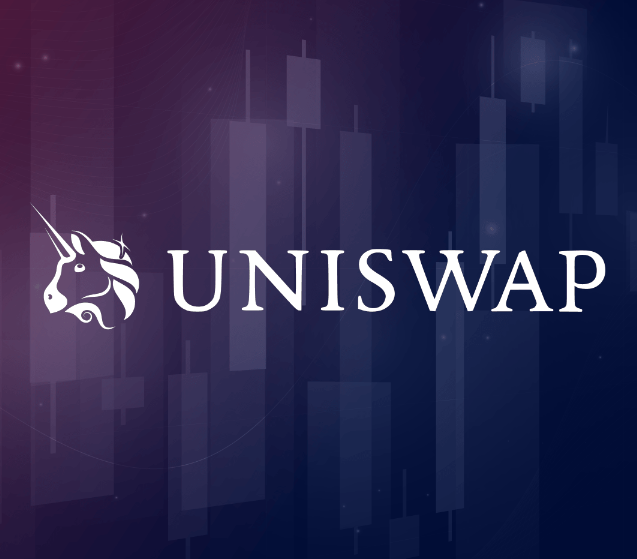bbc.towzdog.com – Uniswap Trading Guide: Mastering Decentralized Exchange Trading In the rapidly evolving world of decentralized finance (DeFi), Uniswap stands out as one of the most popular platforms for trading cryptocurrencies. As a leading decentralized exchange (DEX), Uniswap enables users to swap tokens directly from their wallets without relying on a centralized authority. This Uniswap trading guide will provide you with in-depth insights into how to trade on Uniswap effectively, its unique features, and tips for maximizing your trading experience.
What is Uniswap?
Understanding Uniswap and Its Functionality
Uniswap is an automated market maker (AMM) that allows users to trade Ethereum-based tokens. Unlike traditional exchanges that use order books to match buyers and sellers, Uniswap utilizes liquidity pools. Here’s how it works:
- Liquidity Pools: Users contribute tokens to liquidity pools, allowing others to trade against these pools. In return, liquidity providers earn a portion of the trading fees.
- Token Swaps: When you trade on Uniswap, you’re swapping one token for another directly through the liquidity pools, ensuring instant transactions without waiting for order matches.
Key Features of Uniswap
- Decentralization: Uniswap operates on the Ethereum blockchain, ensuring that users maintain control of their assets throughout the trading process.
- Token Variety: Uniswap supports thousands of tokens, enabling users to trade popular cryptocurrencies and newer projects alike.
- Liquidity Incentives: Users can earn rewards by providing liquidity, making it an attractive option for those looking to generate passive income.
Getting Started with Uniswap Trading
Setting Up Your Wallet
To start trading on Uniswap, you need a compatible cryptocurrency wallet. Here’s a step-by-step guide to setting up your wallet:
- Choose a Wallet: Popular choices include MetaMask, Trust Wallet, and Coinbase Wallet. Download and install the wallet of your choice.
- Create an Account: Follow the instructions to create a new wallet. Ensure you back up your recovery phrase securely.
- Add Ethereum: Since Uniswap operates on the Ethereum network, you’ll need to purchase some ETH to cover transaction fees. You can buy ETH from exchanges like Coinbase or Binance and transfer it to your wallet.
Connecting Your Wallet to Uniswap
Once your wallet is set up and funded, follow these steps to connect it to Uniswap:
- Visit Uniswap: Go to the Uniswap website at uniswap.org.
- Connect Wallet: Click on the “Connect Wallet” button. Select your wallet from the options presented.
- Authorize Connection: Follow the prompts to authorize the connection between your wallet and Uniswap.
Selecting Tokens for Trading
After connecting your wallet, you can start trading. To do this, you need to select the tokens you wish to swap:
- Choose Your Tokens: In the trading interface, select the token you want to swap from the dropdown menu. Then, select the token you want to receive.
- Check Token Availability: If the token isn’t listed, you can paste its contract address into the search bar to find it.
- View Prices: Uniswap will display the current exchange rate between the selected tokens.
How to Trade on Uniswap
Step-by-Step Trading Process
- Enter the Amount: Specify the amount of the token you want to swap. Uniswap will automatically calculate how much of the other token you will receive based on the current exchange rate.
- Review Transaction Details: Before proceeding, review the transaction details, including the estimated gas fees. Adjust the slippage tolerance settings if needed. Slippage refers to the difference between the expected price of a trade and the actual price due to market fluctuations.
- Initiate the Swap: Click the “Swap” button to initiate the transaction. A confirmation window will appear.
- Confirm the Transaction: Review the transaction details one last time, then confirm the swap in your wallet. Your wallet will prompt you to approve the transaction and pay the necessary gas fees.
- Wait for Confirmation: After confirming, you’ll need to wait for the transaction to be processed on the Ethereum blockchain. You can check the status on a blockchain explorer like Etherscan.
Understanding Gas Fees
Gas fees are essential when trading on Uniswap, as they are paid to miners for processing transactions on the Ethereum network. Here are a few tips to manage gas fees effectively:
- Check Gas Prices: Before trading, check the current gas prices using tools like Gas Station to ensure you’re not overpaying.
- Timing Your Trades: Gas fees can vary significantly based on network congestion. Trading during off-peak hours can help you save on fees.
- Use Layer 2 Solutions: Consider using layer 2 solutions like Polygon or Optimism to reduce gas fees when trading.
Strategies for Successful Trading on Uniswap
1. Research and Analysis
Before trading any token, conducting thorough research is crucial. Here are some aspects to consider:
- Project Fundamentals: Understand the purpose and utility of the token you wish to trade. Read the project’s whitepaper and explore its use cases.
- Market Sentiment: Keep an eye on market trends and sentiment by following crypto news and discussions on platforms like Twitter and Reddit.
- Price Trends: Utilize charting tools to analyze price movements and identify potential entry and exit points.
2. Diversification
Don’t put all your eggs in one basket. Diversifying your trading portfolio can help mitigate risks. Consider trading a mix of established tokens and promising newer projects to balance potential gains and losses.
3. Utilizing Liquidity Pools
If you’re interested in earning passive income, consider providing liquidity to Uniswap’s pools. Here’s how to do it:
- Select a Pool: Choose a liquidity pool that aligns with your trading strategy. Popular pools often offer better returns.
- Add Liquidity: Navigate to the “Pool” section on Uniswap, select your tokens, and specify the amount you want to contribute.
- Earn Fees: As a liquidity provider, you’ll earn a share of the transaction fees generated by the pool based on your contribution.
4. Stay Updated
The DeFi landscape is continually changing, with new projects and updates emerging regularly. Stay informed about Uniswap’s developments, governance proposals, and community discussions to make informed trading decisions.
Risks Associated with Uniswap Trading
1. Impermanent Loss
One of the main risks of providing liquidity on Uniswap is impermanent loss. This occurs when the price of tokens in the liquidity pool diverges significantly from when you deposited them. While you earn fees, the value of your assets may decrease compared to holding them directly.
2. Smart Contract Vulnerabilities
Although Uniswap has undergone extensive audits, the risk of smart contract bugs and exploits exists in any DeFi protocol. Always conduct your research and understand the risks before engaging with any DeFi platform.
3. Market Volatility
The cryptocurrency market is notoriously volatile. Price swings can be drastic, leading to potential losses. Always set stop-loss orders or define a trading strategy that aligns with your risk tolerance.
Conclusion
This Uniswap trading guide provides a comprehensive overview of how to navigate the world of decentralized trading effectively. From understanding Uniswap’s unique features to implementing strategies for success, you’re now equipped to start trading confidently.
Remember, while the opportunities in DeFi are vast, they come with risks. Always do your research, stay informed, and trade responsibly. For more information and updates on trading strategies, check out CoinMarketCap, a valuable resource for crypto traders.




